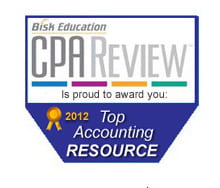University of Maryland: Inside The Head of Warren Buffett
Inside the Head of Warren Buffett
Mar 02, 2015
SMITH BRAIN TRUST — Warren Buffett’s annual letter to Berkshire Hathaway shareholders, for 2015, reflects on the company’s 50 years of success and looks ahead. The Wall Street Journal called on David Kass, clinical associate professor of finance at the University of Maryland’s Robert H. Smith School of Business, to help its readers better understand the 25,000-word manuscript.
Kass, a Berkshire shareholder, also explained to CNBC Squawkbox Asia anchors Bernie Lo and Susan Li why Berkshire manager Ajit Jain is Warren Buffett’s “first choice” as his successor. Hours later — early Monday — Buffett sat down with CNBC for a wide-ranging exclusive interview. Kass boiled the three hours down to 16 essential points for the blog ValueWalk.
For WSJ, Kass and other experts each expanded on a different passage from Buffett’s letter. Kass tackled the following from Berkshire Hathaway’s chairman: “So what do Charlie and I find so attractive about Berkshire’s conglomerate structure? To put the case simply: If the conglomerate form is used judiciously, it is an ideal structure for maximizing long-term capital growth”
Kass’ response: “Conglomerates — companies with diverse unrelated businesses — can provide the optimal mechanism for efficiently allocating capital, which is the principal role for a CEO. Berkshire’s conglomerate structure permits Warren Buffett, for example, to reallocate surplus cash flow from one business, such as insurance, to another business, such as the railroad, where additional capital may be needed for plant and equipment to improve its performance.
“If Berkshire was not able to reallocate its capital internally among its various businesses, it might have to raise external capital through either debt or equity financing and incur additional investment banking related costs associated with these transactions. It would incur additional interest payments for debt or dilute the ownership stake of its stockholders by issuing equity. In addition, Berkshire moves its funds internally in a tax — efficient manner by not incurring capital gains taxes when moving its funds from one business to another. By eliminating transaction costs and taxes, Berkshire is able to maximize its long-term capital growth. Furthermore, it is this freeing up of excess cash flow from Berkshire’s 80 businesses that provides the source of funds for Berkshire to acquire or invest in other companies which has been a major source of its growth.”
The entire WSJ piece is here.
Kass also commented for Omaha World Herald coverage related to Buffett’s letter:
- ‘Refreshing,’ puzzling: Analysts weigh in on Berkshire Hathaway letter
- Berkshire Hathaway built to last, Warren Buffett tells shareholders
- In many ways, Berkshire already employs better executives than Buffett
- Service problems in 2014 give BNSF (Railroad) ‘a lot of work to do’
Kass, with faculty colleague Elinda Kiss, will accompany Smith finance students –- for the sixth consecutive year — to Berkshire Hathaway’s shareholder meeting on May 2 in Omaha.
– See more at: http://www.rhsmith.umd.edu/news/inside-head-warren-buffett




